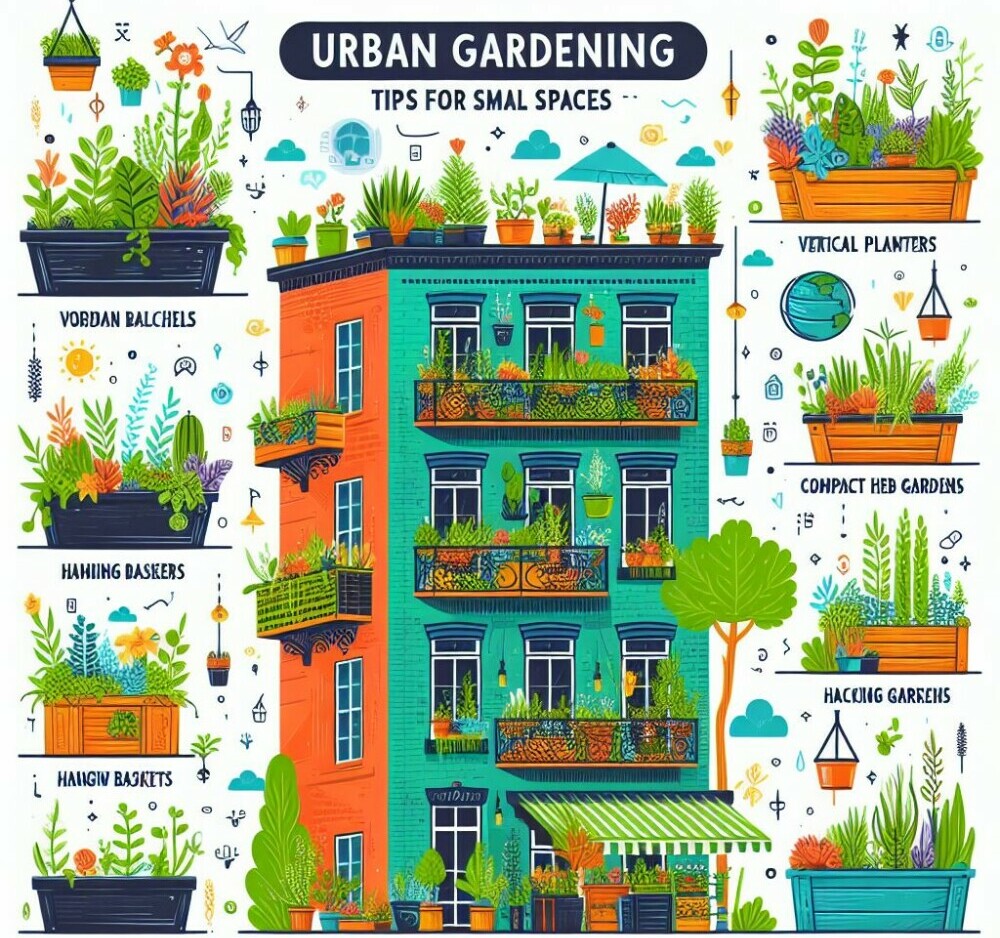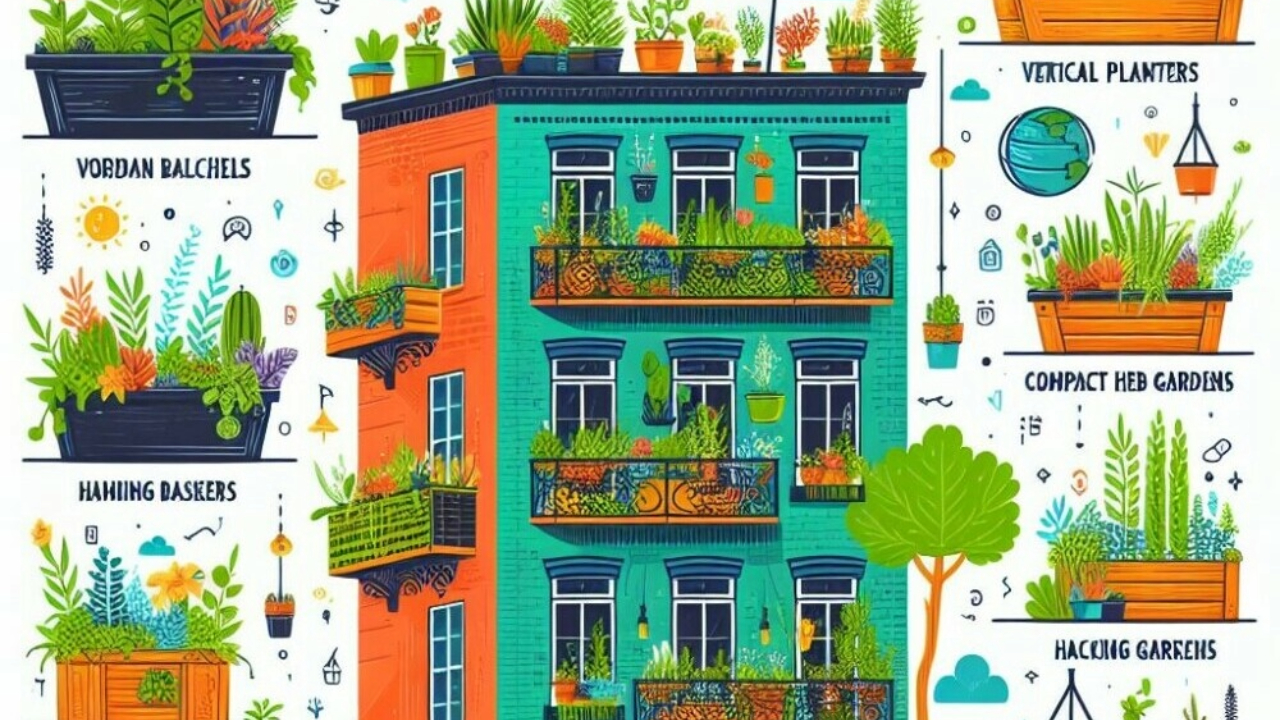 you think
you think
If you think that bustling city life means waving goodbye to the joys of gardening, I’m here to shed some light on an exciting truth. Urban gardening in small spaces is not just doable; it’s a growing trend bringing a bit of greenery back into the concrete jungle. It’s about turning nooks and crannies into thriving plant hubs and tiny balconies into mini oases.
But this isn’t just about beautifying your living area. By embracing urban gardening, you’re taking steps toward improving your well-being and contributing positively to the environment. Plants can boost air quality and reduce stress levels, not to mention the satisfaction of growing your food. Plus, you’re practicing sustainability by localizing food production and decreasing reliance on long-distance goods.
However, embarking on this green journey involves more than plopping a plant into a pot. It requires thoughtfulness about resource use and understanding your unique urban settings. That’s where sustainable practices come into play, like choosing local plant varieties or upcycling materials for your garden setup — laying the foundation for an eco-friendly approach from the ground up.
So, if you want to transform your limited space into a productive and blissful garden spot, I’ve got your back. Whether it’s a tiny apartment balcony or just a windowsill, a variety of strategies and tips can help you create a flourishing urban garden. You can constantly adjust your approach as you learn what works best for you and your plants.
With that groundwork laid, let’s move on to the next section. Here, you’ll learn about maximizing your living space regardless of its size. We’ll dive into creative container gardening, which will include selecting suitable containers, exploring vertical gardening solutions, and making the most of every beam of sunlight that graces your urban abode. Get ready to roll up your sleeves—we’re just getting started.
Maximizing Your Space: Creative Container Gardening
The secret to a flourishing urban garden in a cramped space isn’t just about working with what you have and getting creative with it. Think of container gardening as the Swiss Army knife for cultivating plants in small areas – it’s versatile, space-efficient, and can be just as fruitful as traditional gardening.
For starters, choose containers that fit your space and complement the plants you want to grow. Deep pots are great for root vegetables, while broad, shallow containers suit herbs and leafy greens. Materials matter, too: fabric pots promote air pruning for healthier roots, and self-watering planters can be a savior for the busy urban gardener.
Vertical gardening is a game-changer for tight spaces. You can grow upwards by using trellises, wall-mounted planters, or even repurposed shoe organizers, significantly increasing your growing surface area without spreading out. It’s like building an extra floor in your garden!
Don’t overlook the potential of your home’s nooks and crannies, like balconies or windowsills. These areas can be excellent spots for plants that thrive with more sun. And if you’re part of an apartment community, check if communal space could become a shared garden, fostering community while growing your greens.
Connecting with fellow urban gardeners can be invaluable. Sharing experiences and resources, such as swapping seeds and cuttings, can help you diversify your garden and overcome the challenges of limited space. Plus, it’s a fun way to build relationships and learn together.
Plant Selection and Care for Urban Gardens
Choosing the right plants for your urban garden is not only about what looks pretty. It’s also about understanding the limitations and potentials of your space and light availability. Herbs like basil, chives, and mint are fantastic for small spaces and can thrive indoors with just a window sill.
Imagine you’re ready to give your plants the spa treatment they deserve. Watering and feeding are the equivalent. You’ll learn about creating a consistent schedule, using the right kind of plant food, and how to avoid drowning your green friends with too much love (or water).
Now, small doesn’t mean pest-free. Your urban oasis may attract uninvited guests. I’m here to help you identify common pests and diseases and advise on natural remedies that won’t harm the environment or your health.
A little bit of TLC can go a long way. Regular checks, gentle pruning, and adequate air circulation can prevent issues before they crop up. And the beauty is that once you’ve mastered nurturing your urban greens, it all becomes part of the joy of urban gardening.
Are you gearing up to sustain your green patch? Great, the transition to the next section is all about long-term strategies. This isn’t just about getting through the seasons; it’s also about adopting practices that support the growth of your garden year after year.
Sustaining Your Urban Garden: Long-term Strategies
I’m not just talking about starting an urban garden; I’m focused on keeping it thriving for the long haul. The dedication after the initial excitement really counts, and that’s what I’m here to help you with.
Composting might seem daunting if you’re operating in tight quarters, but it’s gratifying. You can start small with a countertop compost bin designed for urban dwellers. This turns kitchen scraps into gold for your plants, reducing waste and enriching your soil without needing a backyard.
Rainwater harvesting is another game-changer. Even a simple setup can collect plenty of water for your plants. If you’re on a balcony, a few well-placed buckets during a rainstorm can do the trick. For a more advanced approach, rainwater barrels with a spigot can be a convenient and eco-friendly irrigation system.
And let’s not overlook the power of community. Involving your neighbors fosters a sense of togetherness and can turn gardening from a solo endeavor into a collaborative effort. Maybe it’s a plant swap, a shared composting system, or a balcony watering rota.
Sharing your harvest, when it comes, is the cherry on top of the urban gardening experience. Whether it’s herbs, tomatoes, or just an abundance of flowers, giving away a part of your yield can strengthen bonds and spread the joy of gardening.
Remember, your first attempt at urban gardening doesn’t need to be your last. You can constantly adjust your approach down the road. It’s all about becoming more resourceful, resilient, and connected to nature and your community.

